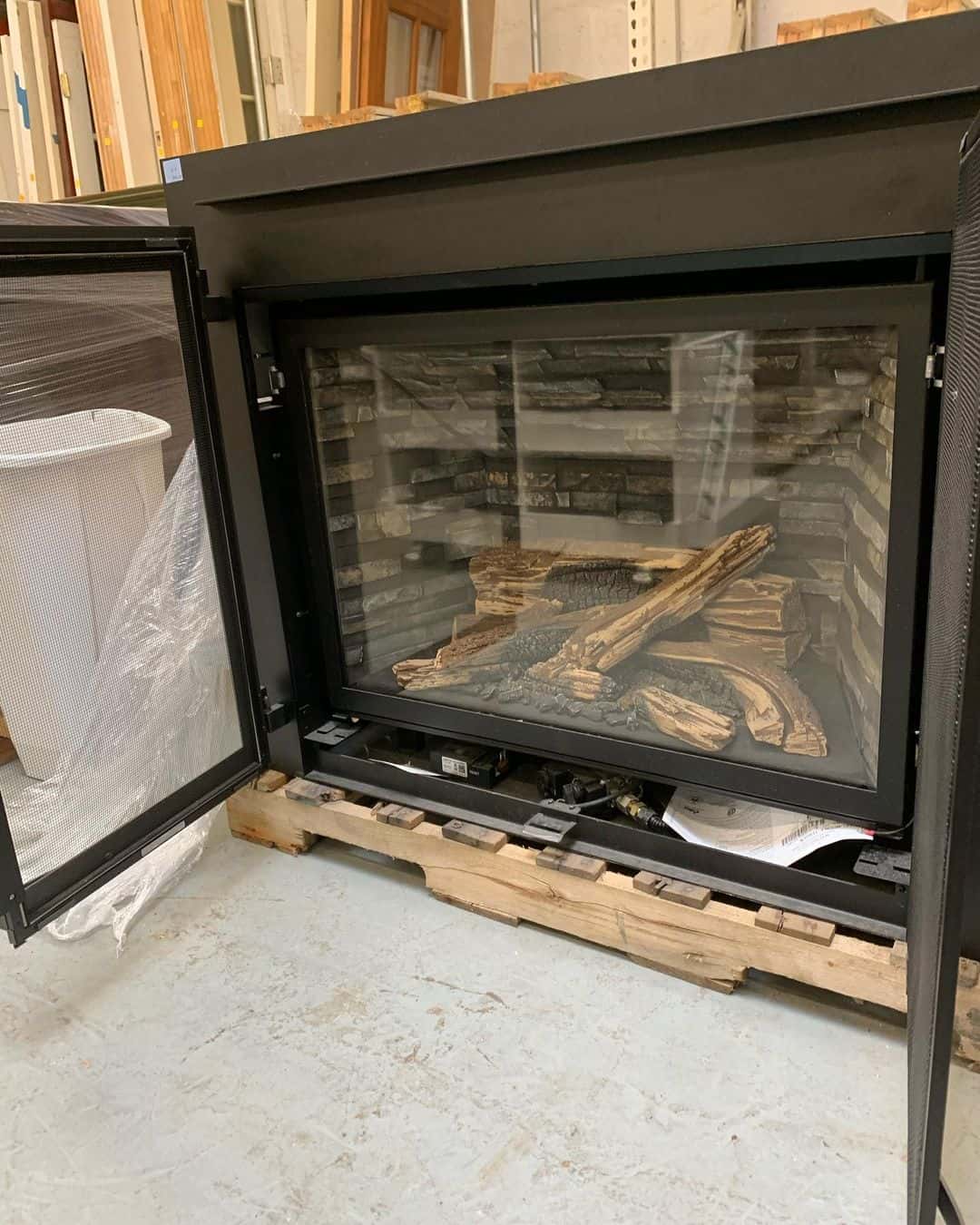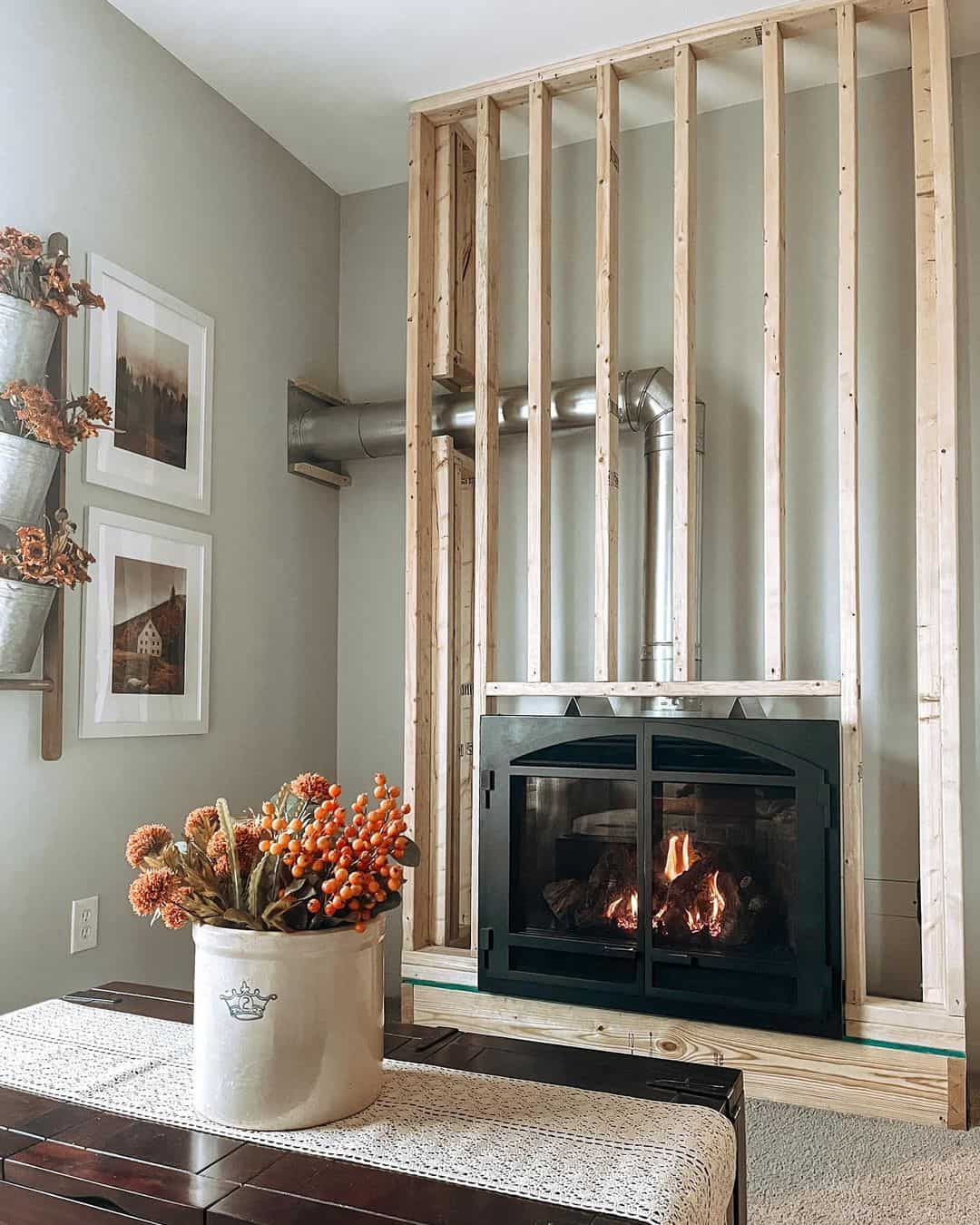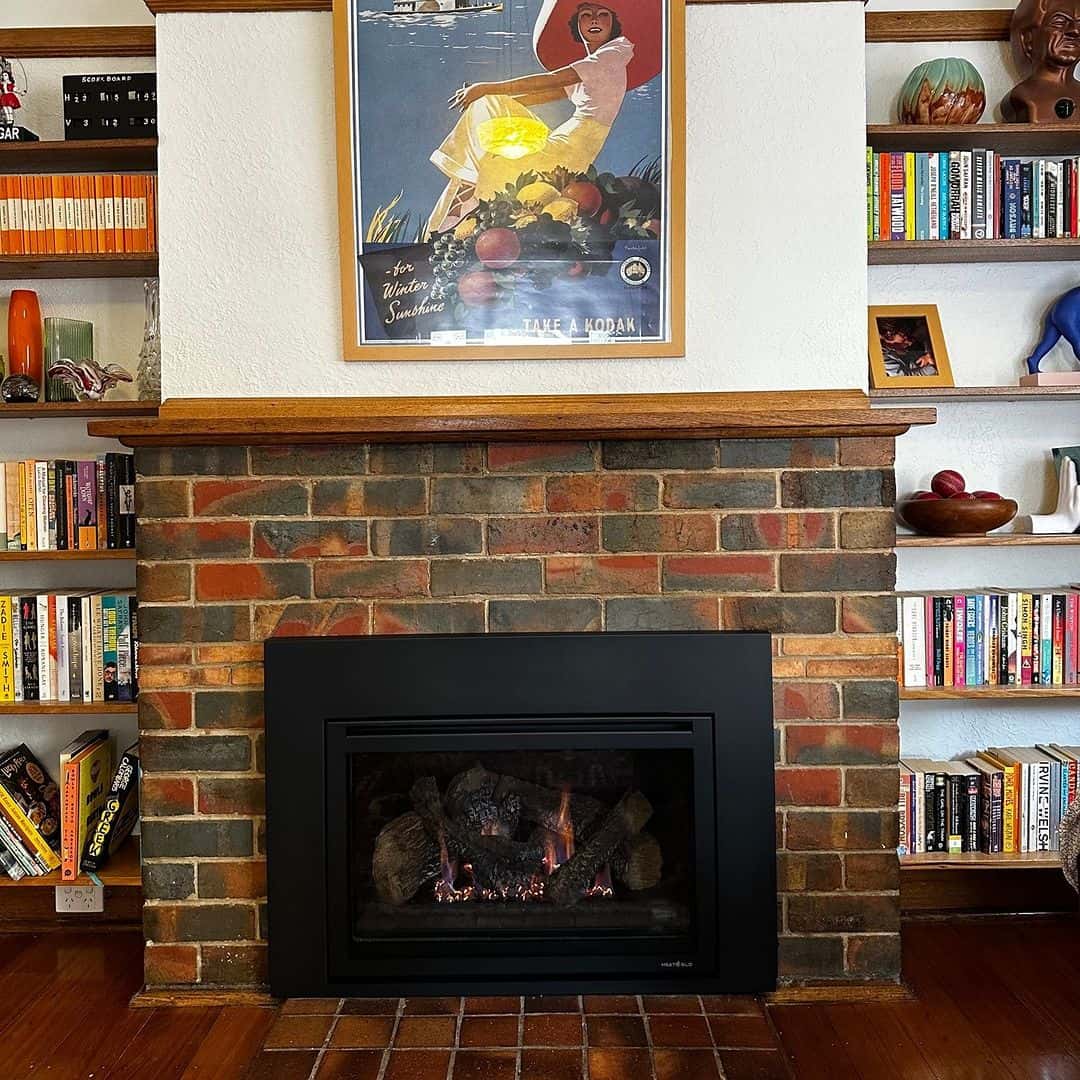Natural gas fireplaces have replaced traditional fireplaces in the majority of homes. They are easy to use, safe, and affordable. Just turn on the switch, and voila – there’s a fire!
But these gas fireplaces aren’t free from issues. A common problem is that the pilot light turns on, but the fireplace doesn’t start. If you’ve come across this issue, don’t worry because it is easily fixable.
You just need to understand the right cause behind it. So, why is your gas fireplace pilot on but won’t start? Let’s discover possible causes & fixes below!
What is Gas Fireplace Pilot Light & Its Role?
A pilot light is the small blue flame inside the gas appliances. It is produced by a constant stream of gas. But why is it there? To serve as an ignition point!
In traditional fireplaces, you have to place firewood into the chamber and ignite it with a matchstick or lighter. Since gas fireplaces don’t involve any manual work, there has to be an ignition point to start the flame.
The pilot light runs continuously all the time. So, when you turn the fireplace on, gas fills up the chamber and hits this small blue flame. This starts the fire and keeps you warm!
Why is Your Gas Fireplace Pilot Light On But Won’t Start?
There are several reasons why the pilot light will be on, but the fireplace won’t start. Here are the most common ones with their solutions:
1. Gas Valve
The gas valve is the device that controls the flow of gas through the pipeline. So, if the main gas valve is turned off, the gas won’t enter the fireplace chamber and hit the pilot light. As a result, there will be no flame!
Check the main gas control valve located near the firebox. Turn it on and check whether the fireplace is starting or not. In case it doesn’t, there might be some other problem.
2. Air lock
Air lock refers to a condition when the flow of something is blocked due to an air bubble. This can happen in the gas pipeline if you didn’t turn on the pilot light for a few days. The stale air will build up in the pipe and create a bubble.
To release this bubble, press and hold the gas valve knob. Then, press the ignitor button to turn on the pilot light. If it doesn’t turn on, keep pressing the pilot button repetitively. Let the air leak out of the pipe for at least 10 minutes.
Once the pilot light turns on, you can press the valve knob for 30 more seconds. This will ensure all the stale air is out and the gas can flow through the pilot tubing easily. If the pilot light is ignited, immediately turn the gas valve to the on position.
3. Obstructions

If you are habitual in turning off the pilot light now and then, chances are that dust has accumulated in the pipeline. Or, if you also live in a rural area, insects may crawl into the tube and cause an obstruction.
In any case, the flow of gas will be badly affected and won’t start the fireplace. You can troubleshoot this issue by cleaning the fireplace pipelines. Grab the vacuum and suck all the obstructions out of the pipes.
Alternatively, if the debris is on the exterior, use a can of compressed air to dislodge it and suck it with the vacuum cleaner.
4. Moisture
Sometimes, different pipelines are running together. If your gas pipeline is adjacent to a water tube or there is a lot of humidity in your area, the culprit is moisture.
Moisture will damage the gas pipeline, which causes the gas to leak in your house and pose a safety hazard. It may also enter the tubing and dilute the natural gas. So, even when gas is flowing through the pipelines and the pilot light is on, it is not suitable to ignite a flame.
The only solution to this issue is to contact a plumber. They will either change the pipe arrangement or replace the damaged gas pipe with a sturdier one.
5. Overloaded Circuit Breaker
A circuit breaker is an automated device in a circuit that halts the flow of electricity whenever there’s an overflow. This is a safety measure that protects the linked electrical appliance from getting burned or damaged.
Since a gas fireplace’s circuit is with the main house wiring, it’s possible for it to become overloaded. As a result, the fireplace won’t receive the much-needed power and won’t start except for the pilot light.
You can troubleshoot this problem by checking the house circuit box and resetting any tripped breakers to restore the power supply to the fireplace. If the circuit breaker trips often, it might be faulty and need replacement.
Other Possible Causes & Fixes

Sometimes, the problem is more severe than it appears to be. If none of the methods work, you may want to consider the following problems and fixes.
1. Faulty Gas Valve
If the gas valve is on and obstruction-free, but the fireplace still doesn’t start, it may have become faulty. This is a rare problem because gas valves have few moving parts. These sturdy devices last up to 25 years.
Nonetheless, the possibility shouldn’t be ruled out. A faulty gas valve may create a humming sound or vibrate loudly. In some instances, you will smell gas when the valve is turned off. This is a serious concern as there might be a gas leak.
Open the house windows immediately and call a gas fireplace service to replace the gas valve. If you prefer to do it yourself, check out this useful tutorial!
2. Damaged Thermocouple
Thermocouple is a small metallic device located near the pilot light. It senses the temperature in the surrounding area and lets the gas flow into the firebox for ignition (if required). However, if it’s faulty, the pilot light won’t stay on for long.
There are multiple ways to troubleshoot a faulty thermocouple in a gas fireplace. First, check whether the device is screwed in tightly. Next, examine it for debris and soot. Use a vacuum cleaner to clear the obstructions.
If this doesn’t help, use a multimeter to ensure its proper functionality. Attach the probes to the right terminals and check the reading. If it shows 25 millivolts or more, the thermocouple works fine. But if the reading is less than that, the thermocouple needs replacement.
This task will be complex and risky, so it’s best to contact an expert for it.
3. Broken Wall Switch
Gas fireplaces often have a wall switch to control the ignition. When the pilot light is on, the thermocouple generates up to 1 volt of electricity and sends it to the wall switch. Once you turn on the switch, the voltage is sent back to the fireplace, and it starts the flame.
However, over time, the components and wiring inside the wall switch can become dirty or corroded. The switch may also be broken. To test this, all you need is a screwdriver.
First, locate the wall switch of the gas fireplace and remove the cover plate. Then, double-check whether you have chosen the right switch or not. It should have two small and thin wires instead of large, thick ones.
You can also use a multimeter to ensure the switch belongs to the fireplace. Now, unscrew the switch itself and pull out the wires. Join them together to see whether the fireplace ignites or not. If it starts, the wall switch needs to be replaced.
Just purchase another wall switch (same type), attach the wires, and screw it into place!
FAQs

1. Should the pilot light always be on in a gas fireplace?
Keeping the pilot light always on is not mandatory but recommended. The continuous flow of gas prevents any insects from settling into the pipeline. No air bubble develops either.
However, if you have small children at home, it’s best to keep the pilot light off.
2. Should I turn off the fireplace pilot light in summer?
Yes, you should definitely turn off the fireplace pilot light in summer. It’s because the small blue flame keeps on producing heat throughout the day. This can make your house temperature too warm and uncomfortable.
3. How do you clean a clogged pilot light?
You can use a vacuum cleaner or compressed air to clean a clogged pilot light. If these items are not available or there is buildup, you can also use a wire brush or paper clip to dislodge it. However, never use anything wet on your fireplace parts.
Summary
A gas fireplace often stops working even when the pilot light is on. If you encounter this issue, stay calm and test the following parts for problems:
- Gas Valve
- Gas Pipeline
- Circuit Breaker
- Thermocouple
- Wall Switch
You can easily troubleshoot the issue using the methods above. However, if you have no prior experience in dealing with electric components, we recommend seeking professional assistance. Good luck!
